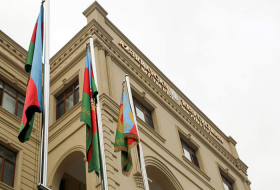The strategic position of our countries in the context of this corridor is undoubtedly important not only due to the transit of goods between Europe and China, but also because our countries boast significant resources. Delivery of these to international consumer markets play a vital part both in terms of budget fulfilment and implementation of various social programs. The Middle Corridor is already being developed. Kazakhstan’s decision, for instance, to expand the railway line for a faster goods transit from China through Kazakhstan to Europe is an excellent illustration of the process. This prompts all the countries within the OBOR (One Belt One Road) project to act and invest to ensure the efficiency and profitability of this project.
The major problems, such as limited port and railways infrastructure and cargo handling mechanisms, especially in the Caspian region, need solving, which can be achieved through building a specialized information centre and pooling of efforts. Digitizing the economy and transport logistics can also significantly accelerate cargo delivery processes. The key factor here is to have the common will and desire to achieve these goals, the rest is certainly possible.
The Middle Corridor introduces new opportunities for economic growth and strengthened trade links between Asia and Europe through providing an alternative and more efficient route for moving goods.
Strategically located at the crossroads between Asia and Europe, Türkiye benefits from the Middle Corridor by increasing transit traffic and reinforcing its status as a crucial transport and logistics hub. Developing this corridor contributes to augmenting trade and economic ties between Türkiye and China, as well as Central Asia and the Caucasus.
Azerbaijan and Georgia also benefit significantly from developing the Middle Corridor. Azerbaijan sees it as a catalyst for developing transport infrastructure and economic growth, thus strengthening its role in regional and international trade relations. As a transit country, Georgia benefits from increased traffic and investments into transport infrastructure, which stimulates its economic development and fortifies its position in the region.
Central Asia, including Kazakhstan, Uzbekistan, Turkmenistan, Kyrgyzstan, and Tajikistan, consider the Middle Corridor a chance to develop their transport networks, boost export of their goods and resources, and attract foreign investment. Furthering this route contributes to diversification of their economies, while reducing dependence on traditional export markets and transit routes.
The Middle Corridor thus opens new horizons for participating countries, contributing to their economic growth, infrastructure development, while strengthening international trade ties. It represents a symbiosis of interests and opportunities for a variety of states, playing a key role in globalization and economic cooperation in the region.
Professor at Kazakh National University, Expert at the Institute of Innovative Economics, Doctor of Economics Magbat Spanov, specially for AzVision.az.
More about:
















































